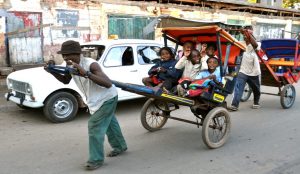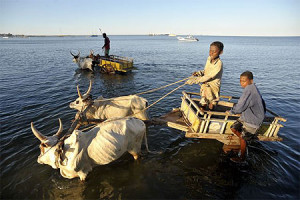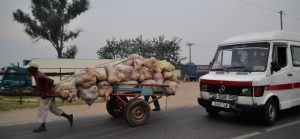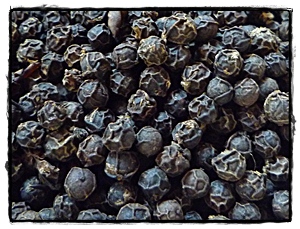Comfortable Travel in Madagascar
When planning a trip to Madagascar, one must also consider how to get around the island from point A to point B. While taking a shared taxi or another motorized taxi is an option, this method of transportation can be uncomfortable and often very dangerous. It is not recommended for anyone who is not absolutely dependent on it. In addition to motorized taxis, which often move forward under extremely adventurous conditions, there are also. Numerous non-motorized taxis and commercial vehicles can be found in Madagascar, which will be discussed in more detail below.
. De nos jours, il n’est plus possible de reconstituer totalement ses origines. Qu’il ait été introduit par les Anglais au XIXe siècle qui connaissaient ce mode de transport depuis les colonies indiennes, ou par les ouvriers chinois du chemin de fer amenés à Madagascar pendant la période coloniale française pour prendre en charge la construction du chemin de fer, le Pousse-Pousse a été introduit. En tout cas, les Pousse-Pousse sont des véhicules tirés par des personnes qui marchent. Ils ressemblent beaucoup à une carriole, à la différence qu’aucun cheval n’est attelé. Il y a particulièrement beaucoup de Pousse-Pousse à Antsirabe, une ville que vous pouvez visiter lors de nos parcours sur la RN7. Visitez-la lors de nos parcours sur la RN7. Nous proposons un Tour d’Antsirabe à Ambositra, un moyen merveilleux de découvrir les villages Zafimaniry et de vous immerger dans un mélange harmonieux de culture, de nature et d’aventure. Au cours de ce voyage à Madagascar, vous remarquerez sûrement les Pousse-Pousse à Antsirabe, où on estime qu’il y a plus de 6 000 de ces véhicules en activité, transportant des clients jour et nuit. Les propriétaires de ces taxis non motorisés sont principalement d’origine indienne, qui les louent à des chauffeurs contre une redevance de 70 centimes pour qu’ils puissent gagner leur pain quotidien grâce aux trajets en taxi. Les pousse-pousses ne sont pas seulement utilisés pour transporter des clients à travers les villes, mais aussi pour faire des courses quotidiennes. Les gens utilisent les pousse-pousses pour emmener leurs enfants à l’école ou faire leurs achats. Certains les utilisent même pour transporter des charges plus importantes, car ces véhicules peuvent transporter jusqu’à une tonne de marchandises. À Antananarivo, par exemple, il existe une version plus étroite du pousse-pousse utilisée exclusivement pour le transport de marchandises.
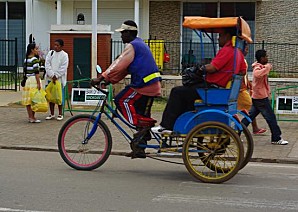
Rickshaws – Fast and Comfortable
In addition to the Pousse-Pousse, there are a number of other vehicles used for transporting passengers or goods in Madagascar. The classic rickshaws pulled by bicycles are becoming increasingly popular on the island. These vehicles are now very modern even in major German cities like Berlin or Hamburg. The rickshaws in Madagascar all come from India or China, where they can be purchased very cheaply because they are no longer needed in those countries. The rickshaws are significantly faster than the traditional Pousse-Pousse and offer a more comfortable ride for passengers.
When booking a trip from Antananarivo to Tulear with us, you will have the opportunity to experience a ride in a rickshaw. These rickshaws, also known as Pousse-Pousse, are not only more comfortable for both the driver and the traveler, but they are also more stable and therefore safer. As you travel from the central part of the country to the southern tip, you will visit many cities where you can book a ride in a rickshaw.


